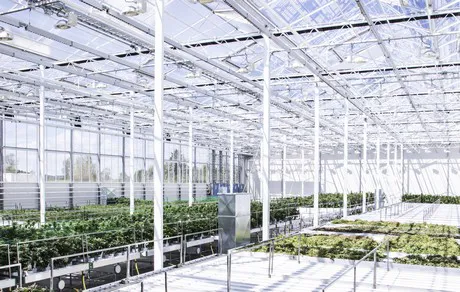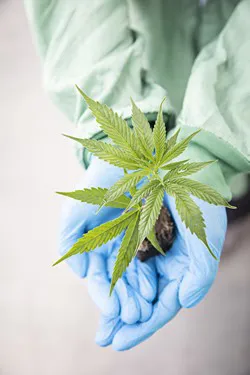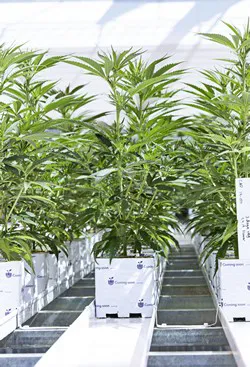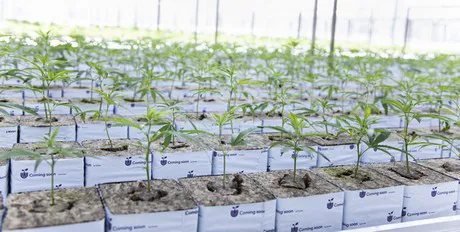Of all the different horticultural crops, cannabis surely is one with a very peculiar history. While the many medical and economic benefits of this plant are very much acknowledged, the prohibition wave that started after World War 2 has prevented further research into the intricacies of cannabis.
“Cannabis has been a medicine since the 1st century,” says Marianne Hundtofte Nielsen, Vice President of Business Development & Director Medical Affairs at Aurora Europe. “Yet, there were times in history when cannabis was illegal. If you take a look at the sheer amount of papers published, you can see that there were a lot until the ‘60s. As cannabis became illegal, publications dropped dramatically. But now, thanks to countries regulating medical cannabis use and pilot programs opening in numerous countries, you can see that there is a revitalization of the interest in research, especially because it is necessary to update the information available from the past. Medical cannabis is not just one product, but a group of products, each of which with different properties: it is critical to study the different levels of active ingredient to understand the potential for effect on diseases.
 Marianne Hundtofte Nielsen, Vice President of Business Development & Director Medical Affairs at Aurora Europe
Marianne Hundtofte Nielsen, Vice President of Business Development & Director Medical Affairs at Aurora Europe
A surge in scientific publications
As the sentiment on cannabis changed, the number of scientific publications increased exponentially. “If you look at publications in 2015, there were 1,600 for the whole year,” Marianne points out. “Then, in 2020 there were 2,300 publications: a clear trend, that cannabis research is revitalized and growing stronger.”

Although research has started catching up, there’s still a lot to understand. “Researchers and scholars are trying to understand how these medications work, and in which concentrations they work; it might be just a single cannabinoid, or maybe it’s a combination of them – and then there’s also the entourage effect and terpenes!” Marianne says. “The production of medical cannabis is regulated by strict European guidelines and laws. The cannabis plant grows in high-tech facilities. Defined standard procedures, light duration and intensity, temperature, air purity and humidity and the supply of nutrients are strictly monitored. This ensures a high and always consistent pharmaceutical grade quality of medical cannabis.”

For pharmaceutical products, this is summarized in the European Union Good Manufacturing Practices (EU-GMP). EU-GMP certification is a demanding process and require a team with GMP training and experience to manage the production. This is necessary to ensure quality of the products and ultimately guarantying patient safety.
The EU-GMP standards basically require growers to have full control of all the steps of the production in order to produce a high-quality pharmaceutical grade product. “Everything you do has to be documented in SOPs, and you have to prove that you can replicate that process over and over with the same results. Parameters for each product are defined and are checked/controlled by authorities for each batch. Often when you hear about product recalls, it is likely that they are not complying with the rules, or there’s too much variation in the product. EU-GMP standards were explicitly made to solve issues with product variations.”
Pushing the boundaries
Aurora is not only one of the cannabis giants with regards to cultivation but also with regard to research efforts. Amongst others, Aurora Europe for example has recently completed a research program made in collaboration with the Humboldt-Universität zu Berlin (HU). “We are also looking at new and unique cultivars in the Canadian breeding facility labs, trying to put us ahead of the curve,” Marianne says. “Often, these are collaborative exercises by Aurora. For instance, we have just recently finalized an interdisciplinary program in Europe with the Humboldt-Universität zu Berlin. Different aspects of the industry got explored, not only the legal and economic frameworks but also treatment and the production-related aspects of medical cannabis.”
After the very positive results that the collaboration between Aurora and HU has brought, “the seed has been planted,” as Marianne puts it. “The university will continue researching the topic of cannabis from different perspectives. We expect many medical cannabis-related PhD programs being set up not only in Germany but also in other European countries.”

This is especially important when looking at the future of the industry. “We need to establish reliable supply and adequate concentration of active ingredients. It is essential for physicians and their patient. The base for all this is a production of the plant with consistent terpene profiles. To make medical cannabis a standard medical product in the treatment of numerous diseases, we are still at the feet of the mountain. But I am hopeful, with the growing interest and many pilot programs we are on the right way.”
For more information: Aurora
Aurora
1-844-928-7672
auroramj.com
